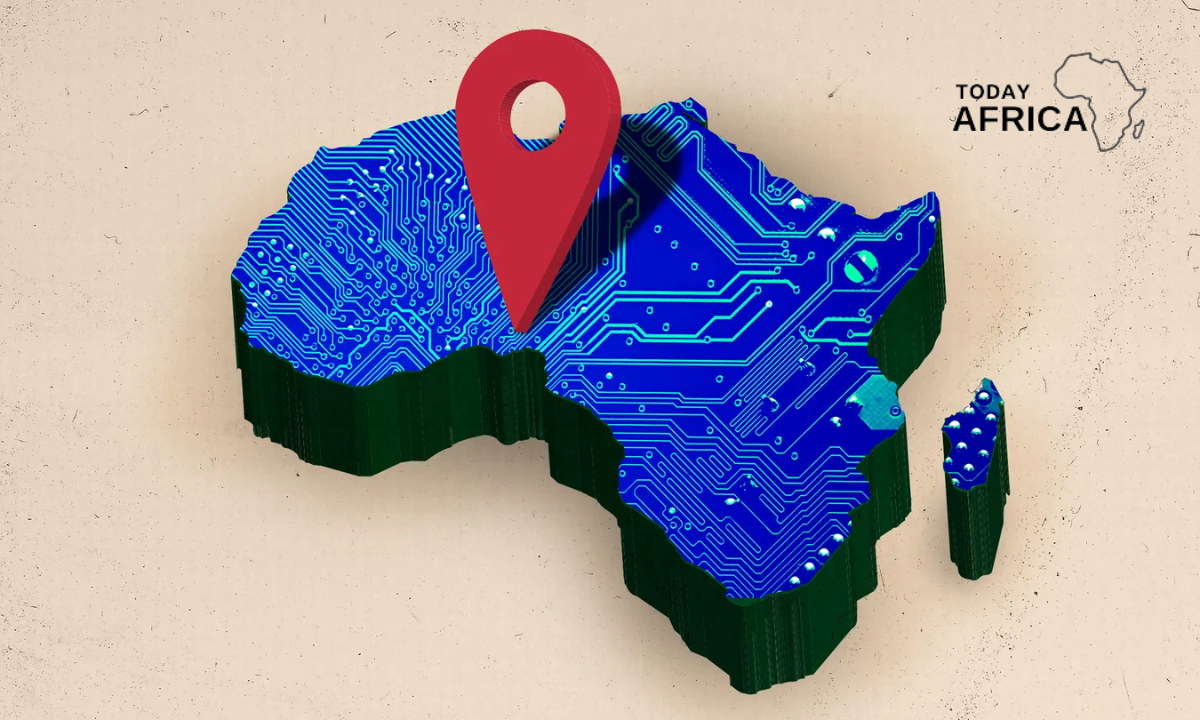There’s a moment every entrepreneur feels at some point. It usually sneaks up on you. You’re going about your day, juggling the usual mix of obligations, then suddenly this realization lands.
This thing I’m building on the side isn’t small anymore. And it’s starting to pull me forward.
Maybe it happens after a month where you doubled your usual revenue without doing anything unusual. Or when clients begin recommending you faster than you can even respond.
Or maybe it’s a quiet moment in your living room, laptop open, when you catch yourself thinking If I had more time, this could be something serious.
If you’re reading this, you’re probably sitting somewhere around that point. Half excited, half anxious, and trying to figure out whether you’re actually ready to turn your side hustle into a startup.
In this article, you’ll learn how to move from side hustle to startup, and help you look at the decision clearly. You’ll get practical indicators, financial milestones, emotional cues, operational guidelines, and real examples.
A look into the side hustle to startup journey
Most entrepreneurs don’t begin their journeys with investors and pitch decks. They begin quietly. A freelance project for extra money. A craft you make because you enjoy it. Or a skill people around you keep asking for. A small idea that won’t leave your mind.
A Zapier survey found that one in three Americans has a side hustle. And it’s not just about income anymore. People use side hustles to test business ideas with low risk, build confidence, and understand the market long before committing full time. It’s almost like a rehearsal that slowly becomes the real show.
There’s freedom in starting small. You get room to experiment without pressure. You get to make mistakes where nobody is watching. And the best part is you get real data about what people need, what they’re willing to pay for, and how much potential your idea really has.
Difference between a side hustle and a startup
It helps to recognize that a side hustle and a startup don’t operate the same way. A side hustle bends around your schedule. It grows whenever you have time and shrinks when life gets busy. It’s flexible, personal, and often informal.
A startup is more intentional. It requires planning, systems, marketing, financial tracking, customer acquisition strategies, and a level of commitment that your evening hours alone can’t provide. A startup is built to grow, not just survive.
The transition usually happens when your side hustle stops depending on your spare time and starts demanding a dedicated structure.
Read Also: How to Turn Your Simple Idea into a Business in Africa
Signs your side hustle is ready to become a startup
1. Revenue that doesn’t feel accidental
This is often the earliest sign. If you notice that people keep paying you consistently for your product or service and this keeps happening month after month, you’re not dealing with a hobby anymore. You’re witnessing natural market demand.
A lot of entrepreneurs experience this moment without realizing it. They think they just got lucky. But when the numbers keep showing up and growing even during slow periods, that’s not luck. That’s validation.
A report from Global Entrepreneurship Monitor suggests that side hustles showing repeatable revenue have a significantly higher probability of becoming sustainable businesses when taken full time.
If your income lines are climbing steadily instead of randomly, you might be standing at the doorway of something bigger.
2. You’ve reached the limit of what you can do on the side
There’s a point where time becomes your biggest obstacle. You can see exactly how the business could grow and you know what marketing you want to try.
You know the improvements customers keep asking for, and you know the partnerships you could build. But you’re stuck because your day job demands most of your energy.
Maybe you’ve turned down customers because you couldn’t meet the timeline. Maybe projects take longer than they should simply because you’re working late at night. And your business keeps nudging for more attention than you can realistically give.
When the only thing holding you back is limited hours, not limited opportunity, that’s a strong sign you’re closer to a startup than a side gig.

Financial readiness for the leap responsibly
1. Understand the financial benchmarks that matter
Money pressure is one of the fastest ways to kill creativity. So before making the jump, it helps to take an honest look at your financial situation. You don’t need to hit some perfect number. But you do need clarity.
Key things to review include:
- Your business should ideally cover your basic expenses or at least a major portion. Many founders aim for 50 to 70% of their monthly costs before going full-time.
- The revenue pattern should show upward movement instead of random spikes.
- Your savings should cover three to six months of living expenses as a cushion.
- Your pricing, margins, and customer acquisition costs should make long term sense.
This isn’t about playing it safe. It’s about setting yourself up to focus on growth instead of survival.
2. Creating a runway that buys you time
A runway is simply extra breathing room. It could come from savings, a supportive partner, a part time job, a grant, or even temporary consulting work.
Many successful founders didn’t go full-time in a straight line. They built their startup during the day and kept a contract gig on the side until the business stabilized.
A CB Insights study shows that running out of money is one of the top reasons startups fail. A runway isn’t a luxury. It’s a strategy. Think of it as giving yourself permission to grow without panic.
Read Also: 50 Low-cost Business Ideas with High Profit from Home
Customer demand and market validation
When people find you on their own
One of the biggest green lights is when customers start showing up without heavy advertising.
Maybe they found your content. Perhaps a friend referred them. Or someone mentioned you in a group chat. When demand shows up with minimal push from you, the market is speaking.
It means people see value. It means the problem you’re solving is real. And most importantly, it means your idea has scale potential.
Consider Glossier. It began as a beauty blog called Into the Gloss. People loved the content so much that when products launched, they already had a devoted audience. That’s what natural demand looks like.
Customer feedback that shows you’re onto something
Pay attention to what customers say. Do they ask for more products, more stock, new features, or additional services? Do they tell their friends, and do they return repeatedly? These are quiet but strong signals.
If customers tell you your solution changed something for them, you may have product market fit emerging. And product market fit is the foundation of a real startup.
At this stage, your business moves from guessing what people want to responding to real voices from the market.
Read Also: 50 Low-cost Business Ideas from Home (that anyone can start)
Emotional readiness often ignored
1. Fear that shows up right before the leap
Everyone who has taken the step from side hustle to startup can tell you they were scared. Even the confident ones admit they questioned everything.
Fear doesn’t mean you’re not ready. It simply means the decision matters to you.
The real question becomes whether the excitement outweighs the fear. If part of you keeps imagining what could happen if you went all in, that’s something worth paying attention to.
Sometimes the harder question isn’t What if I fail. Sometimes it’s What if I never give this a real chance.
2. Passion that doesn’t switch off
A lot of founders say they knew it was time because they couldn’t stop thinking about the business. Not in an obsessive way but in a natural steady way. Ideas kept coming. Improvements felt obvious. Opportunities seemed everywhere.
When your mind keeps wandering back to your hustle even when you’re supposed to be resting, it might be telling you that this work matters on a deeper level.
Passion doesn’t guarantee success. But it fuels the perseverance needed to overcome early challenges, and every startup hits those.
Read Also: How to Get Your First 100 Customers without Spending Big
Operational readiness of your decision
1. When you have clear systems and processes
A side hustle becomes a startup the moment you move from winging it to creating systems. These don’t need to be complicated. They just need to be repeatable. Things like:
- Consistent way of onboarding clients
- Clear workflow for delivering products or services
- Predictable content schedule
- Simple customer support strategy
- Standardized pricing and packaging
Systems reduce decision fatigue. They free you to focus on growth. When you’ve built a solid structure around your hustle, you’re laying the blueprint for a stronger business.
2. Ability to delegate or automate
Growth often requires letting go. If you can imagine hiring a freelancer for certain tasks or using automation tools for routine work, that means your business is scalable.
Scalability is one of the biggest differences between a small hustle and a real startup.
Think of it like this. If the business only works when you’re working, it’s not scalable yet. But if you can hand off tasks and the business still moves, you’re building something sustainable.
Examples of side hustles that became startups
1. Canva
Melanie Perkins didn’t set out to build a global tech company. She was teaching design to college students and noticed how difficult traditional design software was.
This frustration became a tiny idea, then a small project, then a side hustle, and eventually the Canva millions of people use today.
She only went full time once she saw that people were genuinely excited about the product. The demand validated the leap.

2. Fenty Beauty
Rihanna had been experimenting with makeup shades long before launching Fenty Beauty. What started as personal curiosity turned into a global brand after she recognized how underserved certain consumers were.
She didn’t just launch a product. She solved a real problem. And that problem created a massive wave of demand that justified scaling the venture.
Both stories show something important. Big businesses don’t always begin with big beginnings. They start with curiosity, small experiments, and months or years of side hustle energy before becoming something massive.
Read Also: 10 Signs Your Startup Idea Won’t Work (and How to Pivot Early)
Steps for a smoother transition
1. Build a transition plan instead of taking a blind leap
You don’t need a dramatic moment where you walk into your boss’s office and say you’re done. Most successful founders plan the shift gradually.
A plan might include hitting a revenue milestone, finishing a product launch, securing six months of savings, growing your customer base, or automating certain tasks.
A transition plan turns a leap into a staircase.
2. Strengthen your brand and marketing early
Marketing shouldn’t start after you go full time. Begin building momentum now. Create a website or improve the one you have. Start an email list.
Share your story on social media. Publish content consistently. Test small ads or collaborations. When your marketing is already in motion, your startup gains traction much faster once you’re fully focused.
Conclusion
Going from side hustle to startup is one of the biggest professional decisions you’ll ever make. And there isn’t one perfect moment that signals you’re ready.
It’s usually a combination of the following:
- Consistent revenue
- Growing customer demand
- Emotional readiness
- Financial preparation
- Cear systems
- And the unmistakable feeling that this work deserves your full attention.
If those pieces are coming together for you, maybe the question isn’t should I go all in. Maybe the real question is, if I don’t, what will I miss out on?
Your side hustle might be trying to grow into something else. And maybe you’re finally ready to grow with it.
Leave a comment and follow us on social media for more tips:
- Facebook: Today Africa
- Instagram: Today Africa
- Twitter: Today Africa
- LinkedIn: Today Africa
- YouTube: Today Africa Studio
















